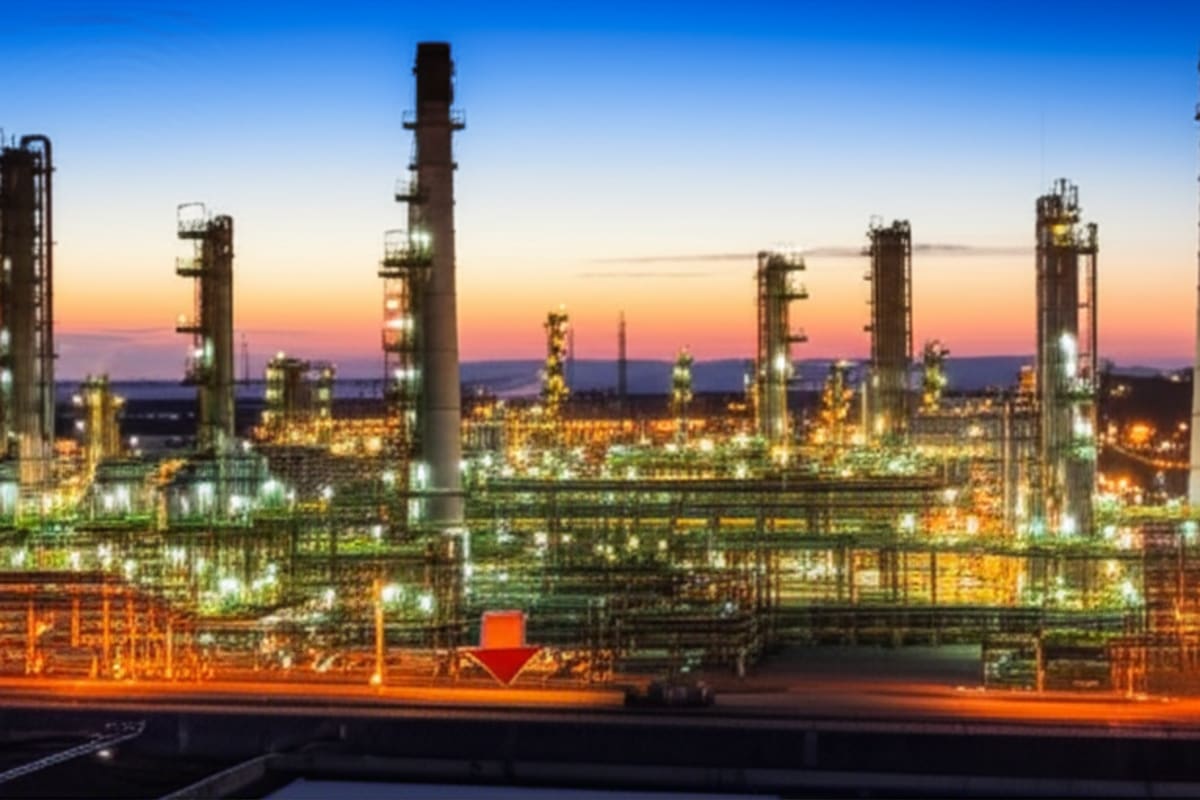OPEC+ Nears Modest November Output Hike Amid Market Share Push

In a significant development for global energy markets, the alliance of oil-producing nations known as OPEC+ is reportedly nearing an agreement in principle to implement a modest supply increase of 137,000 barrels per day (B/D) for November 2025. This decision, emerging from ongoing delegate discussions as of early October 2025, underscores the group's persistent efforts to reclaim and solidify its share of the global oil market.
The move comes despite prevailing forecasts from various analysts pointing towards a potential global oil surplus, a scenario that typically exerts downward pressure on crude prices
Background
This delicate balancing act by OPEC+ highlights the complex interplay between strategic market positioning, internal member economics, and the broader global supply-demand dynamics shaping the future of energy
As the global oil market in late 2025 stands at a crossroads, characterized by ample non-OPEC+ supply and fluctuating demand influenced by global economic health and the energy transition, this strategic decision reflects OPEC+'s efforts to maintain its relevance amidst competitive pressures
Rationale Behind the Modest IncreaseThe rationale behind such a modest increase, particularly when a larger surplus is anticipated, is multifaceted
Primarily, OPEC+ appears to be prioritizing its long-term market influence and share over strictly supporting high prices.
For several years, the group has navigated a challenging landscape marked by fluctuating demand, the rise of non-OPEC+ producers (notably the United States shale sector, Brazil, and new entrants like Guyana), and the accelerating global energy transition
A controlled, albeit small, increase allows key members to generate slightly more revenue without flooding the market entirely.
It signals to competitors that OPEC+ remains agile and prepared to respond to demand signals, even if marginal, and will not unilaterally cede market share by holding back production indefinitely
This strategy aims to maintain the group's relevance and bargaining power in a world grappling with energy security concerns and climate goals.
This move aligns with a key insight: OPEC+ prioritizes market share and long-term influence over strictly supporting high prices, even amid surplus forecasts
The Looming Global Surplus and Strategic DilemmaThe looming global surplus forecast for late 2025 is largely attributed to a combination of factors.
Persistent, albeit moderate, growth in non-OPEC+ supply, coupled with a more subdued global economic recovery than initially hoped for, contributes significantly
Major economies like China and Europe continue to face headwinds, impacting industrial activity and overall fuel consumption.
Furthermore, the accelerating adoption of electric vehicles (EVs) and advancements in energy efficiency across various sectors are beginning to exert a more discernible, albeit gradual, dampening effect on long-term oil demand projections
For OPEC+, this forecast presents a strategic dilemma: maintain tighter supply to prop up prices, risking further erosion of market share, or gradually increase output to retain customers and influence, potentially at the cost of lower prices
The 137,000 B/D hike represents a cautious middle ground, a signal of intent without aggressive market disruption, seeking to balance revenue needs with market stability
This decision by OPEC+ reflects a complex interplay of internal revenue needs, external competitive pressures from non-OPEC+ producers, and the desire to stabilize the market without ceding significant ground
Anticipated Market ReactionsMarket reactions to this 'agreement in principle' are expected to be relatively muted, at least initially
The modest size of the proposed increase suggests it is unlikely to drastically alter the fundamental supply-demand balance in a single stroke.
Traders and analysts are likely to interpret it as a confirmation of OPEC+'s commitment to strategic flexibility, rather than a decisive shift towards either aggressive market expansion or drastic cuts
Focus will quickly shift to the next OPEC+ meeting, expected further down the line, and the evolving global economic indicators, particularly demand trends from key consuming nations
The market will also scrutinize compliance levels among members, which historically have varied
This modest increase signals a cautious, strategic balancing act by the oil-producing alliance, rather than an aggressive market shift.
"OPEC+'s decision reflects a calculated effort to maintain relevance in a competitive market while navigating the complexities of global demand and supply dynamics," noted a leading energy analyst
It's a delicate dance between supporting member revenues and preventing a significant price collapse. "Implications for Southeast AsiaFor Southeast Asia, a region characterized by its diverse energy landscape and rapidly growing economies, this OPEC+ decision and the broader context of a potential global oil surplus carry mixed implications.
A key insight is that Southeast Asian net oil importers stand to benefit from potentially lower crude prices, easing inflation and boosting economic recovery, while producers may face revenue challenges
Net Oil ImportersCountries like Singapore, Thailand, the Philippines, and Vietnam, which are heavily reliant on imported crude oil, stand to benefit from lower oil prices
Reduced energy costs translate into lower input costs for industries, potentially easing inflationary pressures, improving trade balances, and freeing up consumer spending
This could provide a much-needed boost to economic recovery efforts, especially for sectors like manufacturing, logistics, and tourism, which are highly sensitive to fuel prices
Lower pump prices for consumers also support discretionary spending.
Net Oil Exporters/ProducersConversely, nations like Malaysia and Brunei, and to a lesser extent, Indonesia (which despite being an OPEC member historically, is increasingly a net importer due to declining domestic output and rising demand), could face challenges
Lower crude prices would impact national revenues, potentially straining government budgets and reducing funds available for public spending or economic diversification initiatives
Investment in their domestic upstream oil and gas sectors might also face headwinds, affecting long-term production capacity and potentially delaying new projects crucial for maintaining production levels
Refining and PetrochemicalsThe region's robust refining and petrochemical industries, particularly in Singapore, Thailand, and Malaysia, could see improved margins if crude input costs decline while regional demand for refined products remains steady
However, global product demand softness due to economic slowdowns could offset this benefit, making the overall outlook dependent on refined product crack spreads
Logistics and TransportationLower bunker fuel and aviation fuel prices would be a welcome relief for the region's bustling shipping lanes, airlines, and logistics sectors
This could further stimulate regional trade and tourism, crucial pillars of many Southeast Asian economies that are recovering from recent global disruptions
Reduced operational costs could lead to more competitive pricing for goods and services.
Energy TransitionWhile lower oil prices might temporarily reduce the economic urgency for some to transition away from fossil fuels, the long-term commitment to renewable energy and decarbonization remains strong across most Southeast Asian nations
Governments are still pushing for green investments and sustainable development, recognizing the geopolitical and environmental imperatives beyond short-term price fluctuations
For example, countries like Vietnam and the Philippines continue to invest heavily in solar and wind power, regardless of crude price movements
The Road Ahead: Uncertainties and ChallengesThe road ahead for global oil markets and OPEC+ remains fraught with uncertainty.
Geopolitical flashpoints, particularly in the Middle East and Eastern Europe, retain the potential to disrupt supply and introduce significant price volatility
The pace and strength of global economic recovery, especially from major consumption hubs, will be a critical determinant of demand.
Furthermore, the accelerating global energy transition, coupled with technological advancements in renewable energy and battery storage, continues to pose an existential challenge to traditional fossil fuel demand growth
OPEC+'s ability to maintain cohesion among its diverse members, each with unique fiscal needs and production capacities, will be paramount in its ongoing quest to navigate these turbulent waters
A crucial insight here is that the global oil market faces ongoing uncertainties from geopolitical risks, economic recovery pace, and accelerating energy transition
In essence, the 'agreement in principle' for a modest 137,000 B/D hike by OPEC+ for November 2025 is a calculated, strategic maneuver.
It reflects the group's delicate balancing act: asserting its market influence and responding to marginal demand, while simultaneously acknowledging the pressures of an anticipated global surplus
This decision underscores the complex interplay of internal revenue needs, external competitive pressures from non-OPEC+ producers (especially US shale, Brazil, and Guyana), and the desire to stabilize the market without ceding significant ground
For Southeast Asia, the implications are a mixed bag, offering relief to importers but posing challenges for producers
As the energy landscape continues its dynamic evolution, OPEC+'s future decisions will remain a critical barometer of global economic health and the ongoing transition towards a more sustainable energy future
